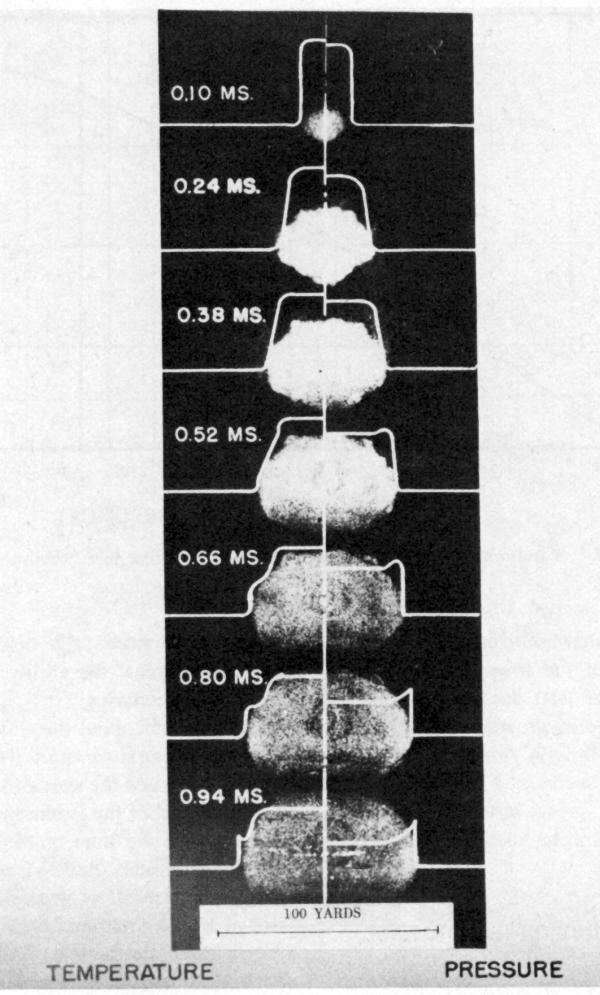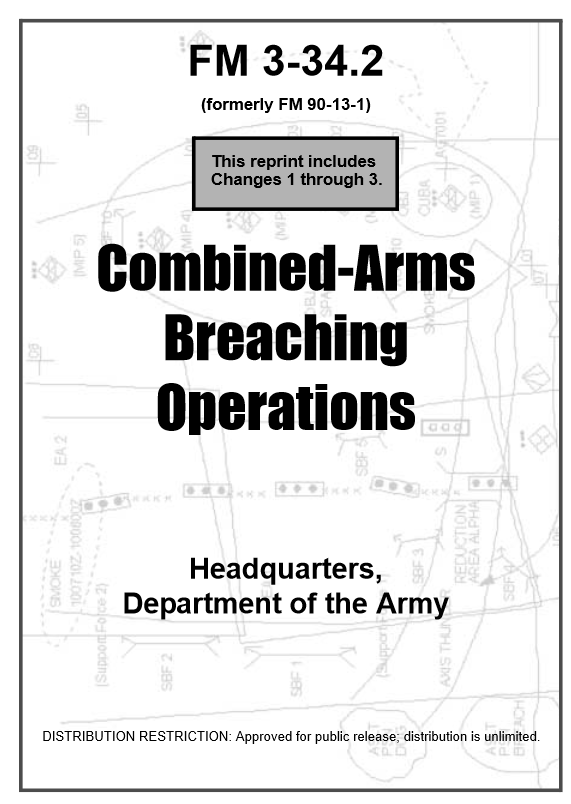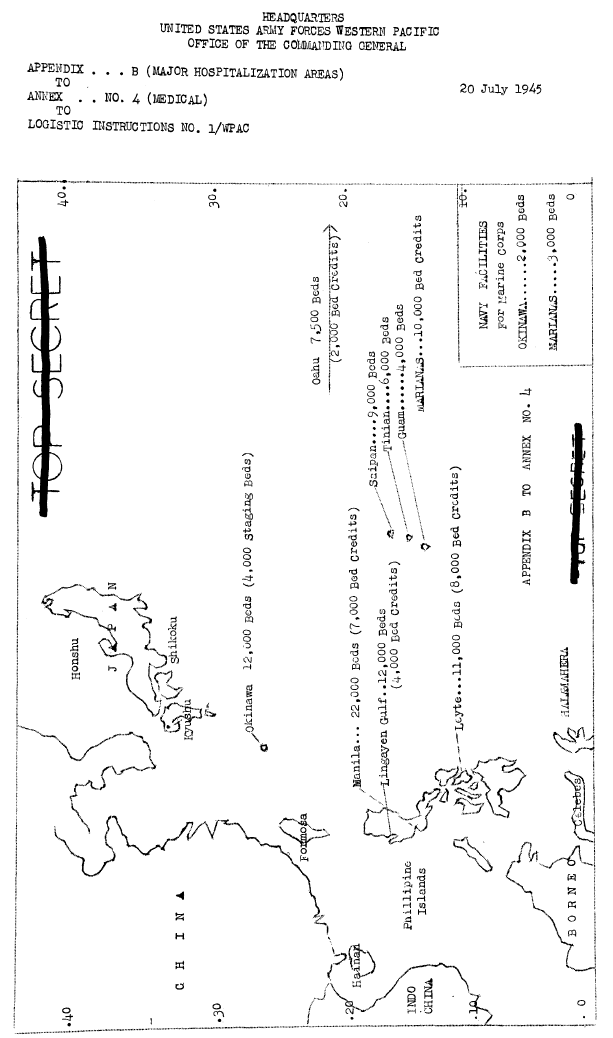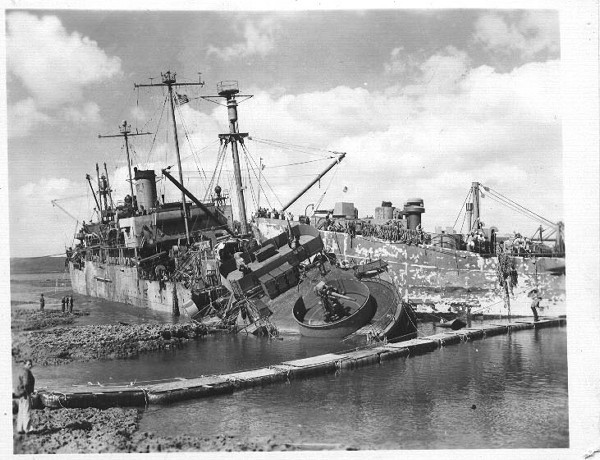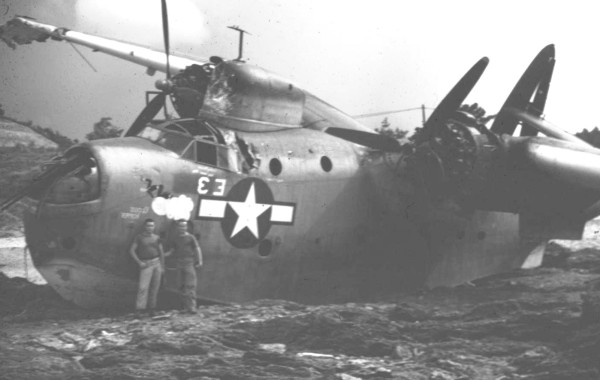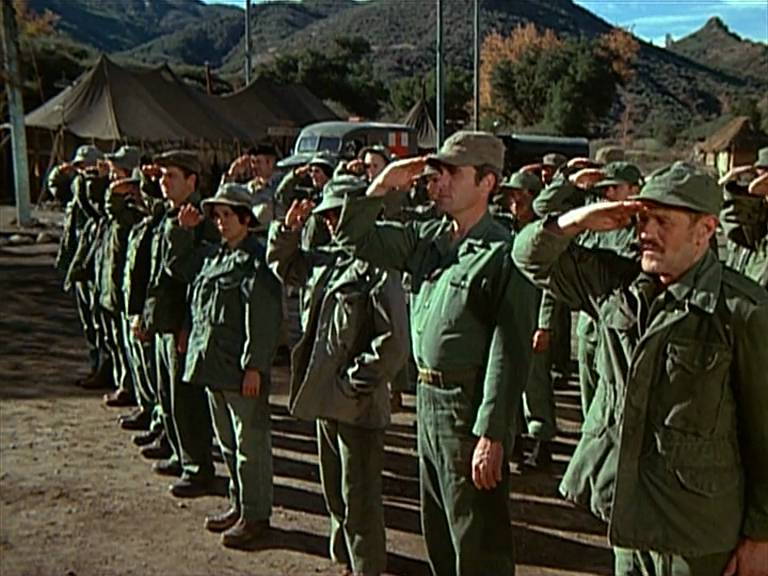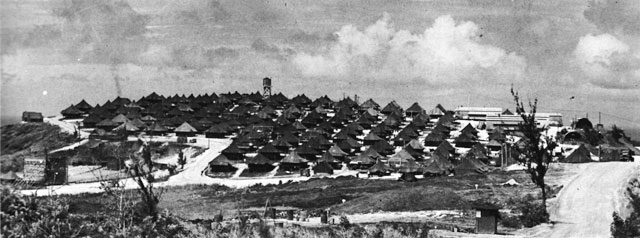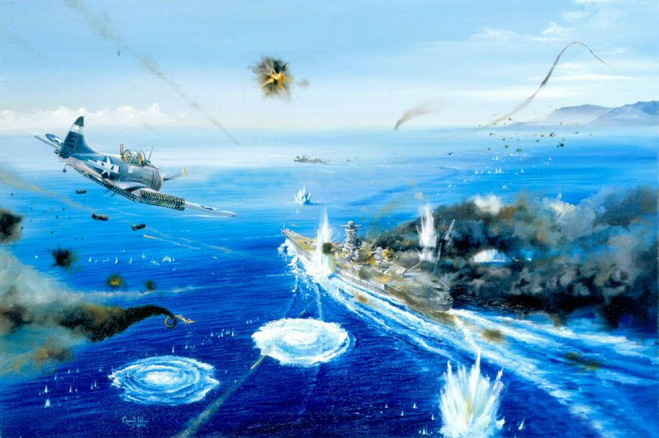[Witnesses to history, Tuttle and the soldiers around him didn’t know what the first use of nuclear weapons would mean, for them or anyone else.]
I stole a glance around and saw that everyone, to a man, was watching the unusual bomb run with me.
They say it was 9:12 am local time when the first bomber released its load and triggered the others to follow suit immediately after. Some men say they saw all five bombs in the air. I for one caught only a glimpse of the first giant steel ball just after it was released. I watched that pair of B-29s turn and dive steeply, right toward my vantage point. The other pairs pulled the same maneuver, leaving in whichever different direction would keep them best clear of the coming blasts. The first pair passed back overhead still diving, engines ripping madly at the air to pull the bombers away from danger. The high flying sentries continued to orbit over the area, a little to the south.
I was eyeballing the two laggards, which had passed the first pair on their way out. A great flash lit them up, brighter than a clear noon sun. Instinctively, though against instructions, I turned north toward the source of the light. In close succession, above the hills and trees in between, another four flashes lit up across the horizon. Each was similar to how the blast from a big navy 16 inch shell lights up the night, but this was in broad daylight.
An ethereal dome formed and spread out around each blast site, visible only by its effects. Cloud layers alternately formed or vanished as the dome passed. Walls of dust and smoke pushed out along the ground around each blast, quickly visible over the near faces of the mountains north of us. A flattened ball of burning air raised up over each of the sites I could see, shedding and re-swallowing smoky clouds as it roiled up through the hole each bomb had made in the atmosphere.
I remembered the late pair of bombers and picked them up again roughly over Karakuni-dake. The laden one had released its bomb and they had turned together to the east. Due north of my location they caught the first blast wave. Both planes suddenly jumped forward and up, while banked into a right turn. With their full profile facing the shock, they were hopelessly damaged instantly. Closer observers say one plane lost most of the right wing before being sucked directly into its partner. Debris rained over the 11th Airborne Division’s former staging area.
The last bomb detonated high over Takachihono-mine, barely two miles from the former front lines of the 40th Infantry Division.
I wrote some time ago about an ‘earthquake’ from artillery bombardment. I thought it was modest hyperbole, but it was not remotely close. Today a real earthquake moved the ground under our feet starting a few minutes after the first bombs went off. A great crack from each explosion was heard, followed by continued crackling that took some time to soften into an echoing rumble. Some men thought they felt the wind shift for a moment.
Men began to talk over the sounds, some of them excitedly whooping, some asking what it meant. The company captain had already gathered his officers and they were pointing at the burning mountains and marking up their maps.
Each explosion had been capped by a flattened ball or rolling donut of smoke and fire which rose steadily over a perfect column of hot smoke and steam. The ball shape stayed together until almost out of sight high in the sky. By then a great haze had spread over the entire horizon. Fires raged around each blast zone. A slight wind carried the smoke to the northeast, away from us and mostly across all the Japanese lines.

